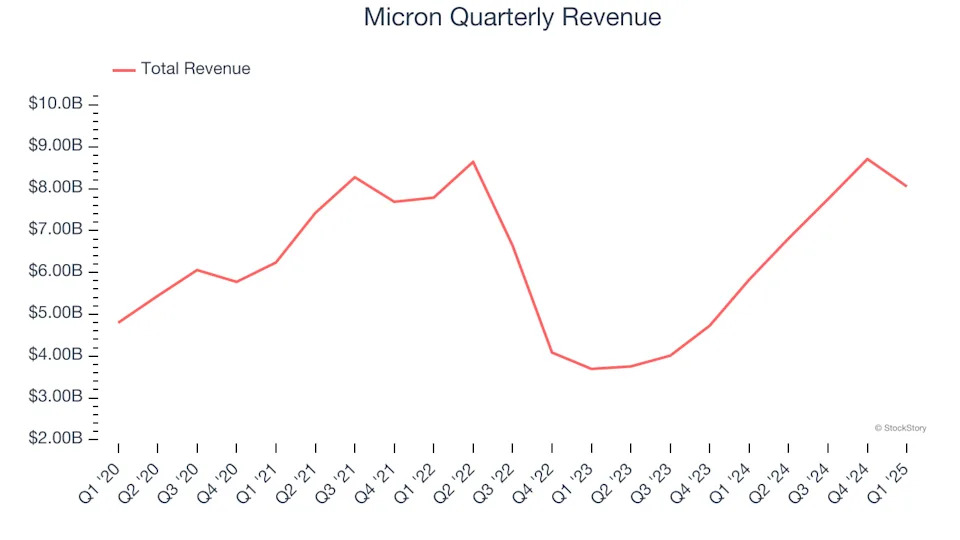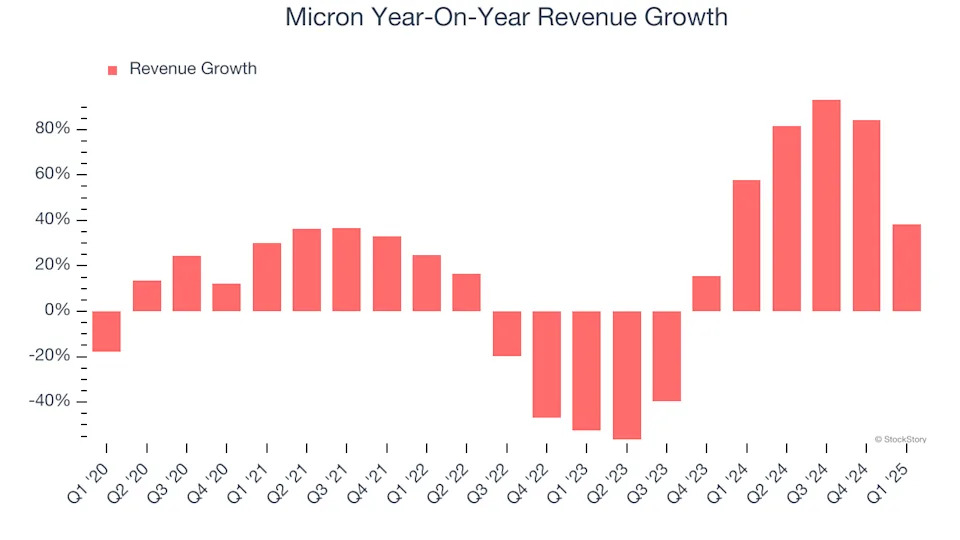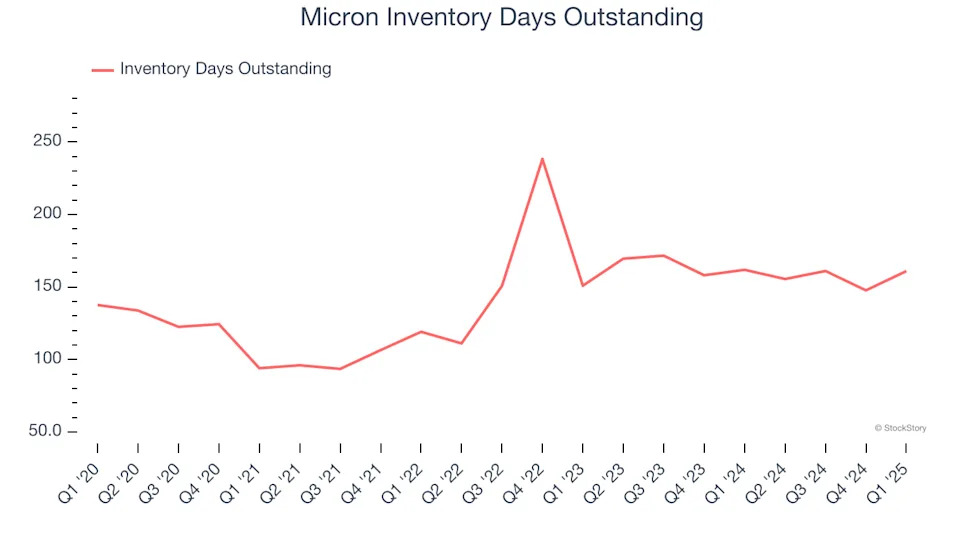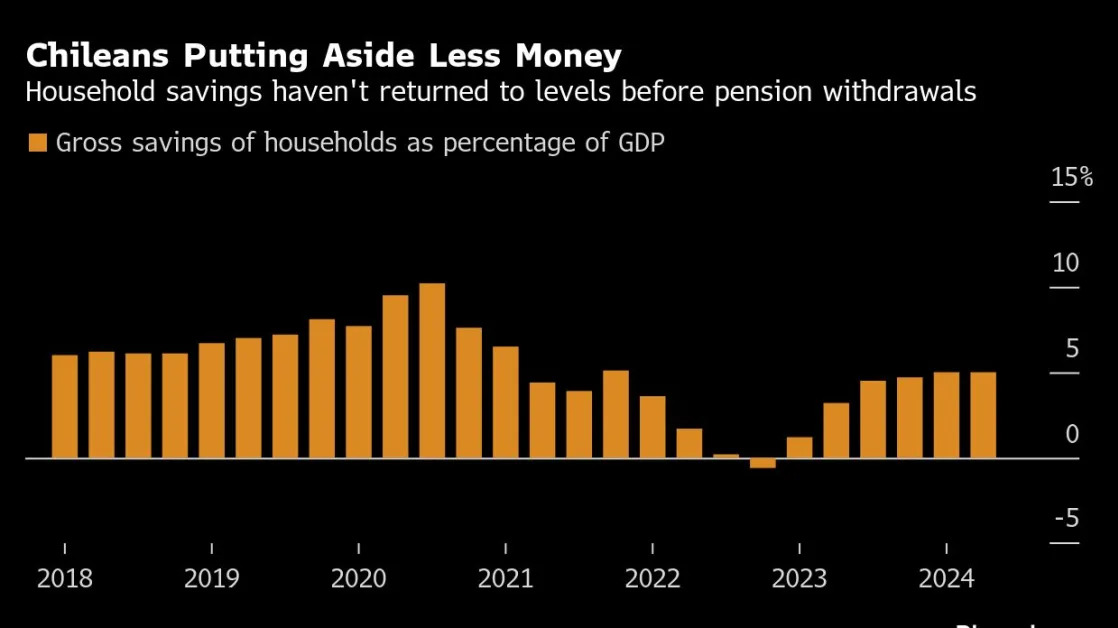
Memory chips maker Micron (NYSE:MU) reported Q1 CY2025 results exceeding the market’s revenue expectations , with sales up 38.3% year on year to $8.05 billion. On top of that, next quarter’s revenue guidance ($8.8 billion at the midpoint) was surprisingly good and 3.2% above what analysts were expecting. Its non-GAAP profit of $1.56 per share was 9.5% above analysts’ consensus estimates.
Is now the time to buy Micron? Find out in our full research report .
Micron (MU) Q1 CY2025 Highlights:
“Micron delivered fiscal Q2 EPS above guidance and data center revenue tripled from a year ago,” said Sanjay Mehrotra, Chairman, President and CEO of Micron Technology.
Company Overview
Founded in the basement of a Boise, Idaho dental office in 1978, Micron (NYSE:MU) is a leading provider of memory chips used in thousands of devices across mobile, data centers, industrial, consumer, and automotive markets.
Memory Semiconductors
The rapid growth in data generation and the need to support increases in processing power for everything from consumer devices to data center servers are driving the demand for memory chips. From the content delivery networks and edge computing to the cloud, data storage is a key component underpinning the global technology architecture. On top of that, secular growth drivers like machine learning and the boom in media-rich digital content are further accelerating the need for storage. Like all semiconductor segments, memory makers are highly cyclical, driven by supply and demand imbalances and exposure to consumer product cycles.
Sales Growth
A company’s long-term sales performance can indicate its overall quality. Any business can put up a good quarter or two, but the best consistently grow over the long haul. Luckily, Micron’s sales grew at a decent 9.8% compounded annual growth rate over the last five years. Its growth was slightly above the average semiconductor company and shows its offerings resonate with customers. Semiconductors are a cyclical industry, and long-term investors should be prepared for periods of high growth followed by periods of revenue contractions.

We at StockStory place the most emphasis on long-term growth, but within semiconductors, a half-decade historical view may miss new demand cycles or industry trends like AI. Micron’s annualized revenue growth of 16.5% over the last two years is above its five-year trend, suggesting its demand recently accelerated.

This quarter, Micron reported wonderful year-on-year revenue growth of 38.3%, and its $8.05 billion of revenue exceeded Wall Street’s estimates by 1.9%. Beyond the beat, this marks 6 straight quarters of growth, showing that the current upcycle has had a good run - a typical upcycle usually lasts 8-10 quarters. Company management is currently guiding for a 29.2% year-on-year increase in sales next quarter.
Looking further ahead, sell-side analysts expect revenue to grow 25.5% over the next 12 months, an improvement versus the last two years. This projection is eye-popping for a company of its scale and indicates its newer products and services will catalyze better top-line performance.
Today’s young investors likely haven’t read the timeless lessons in Gorilla Game: Picking Winners In High Technology because it was written more than 20 years ago when Microsoft and Apple were first establishing their supremacy. But if we apply the same principles, then enterprise software stocks leveraging their own generative AI capabilities may well be the Gorillas of the future. So, in that spirit, we are excited to present our Special Free Report on a profitable, fast-growing enterprise software stock that is already riding the automation wave and looking to catch the generative AI next .
Product Demand & Outstanding Inventory
Days Inventory Outstanding (DIO) is an important metric for chipmakers, as it reflects a business’ capital intensity and the cyclical nature of semiconductor supply and demand. In a tight supply environment, inventories tend to be stable, allowing chipmakers to exert pricing power. Steadily increasing DIO can be a warning sign that demand is weak, and if inventories continue to rise, the company may have to downsize production.
This quarter, Micron’s DIO came in at 161, which is 20 days above its five-year average, suggesting that the company’s inventory has grown to higher levels than we’ve seen in the past.

Key Takeaways from Micron’s Q1 Results
We were impressed by how Micron beat analysts’ revenue and EPS expectations this quarter. We were also glad its revenue and EPS guidance for next quarter exceeded Wall Street’s estimates. On the other hand, its inventory levels materially increased. Still, we think this was a solid quarter with some key areas of upside. The stock traded up 4.7% to $107.71 immediately following the results.
Micron may have had a good quarter, but does that mean you should invest right now? The latest quarter does matter, but not nearly as much as longer-term fundamentals and valuation, when deciding if the stock is a buy. We cover that in our actionable full research report which you can read here, it’s free .





